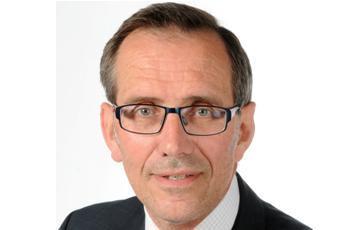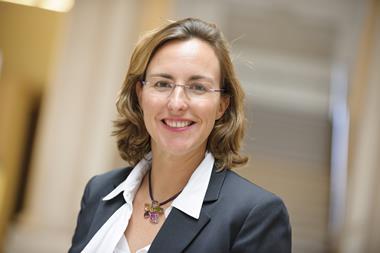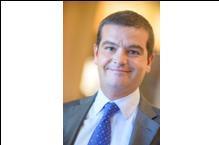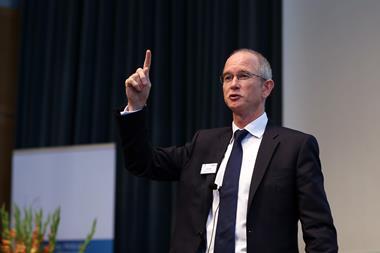Halfway through her two-year term, the bold ambitions of FERMA’s president – to create a profession for risk managers, encourage diversity in risk and insurance and improve innovation – look like they may soon be realised

Following in the footsteps of many of FERMA’s previous presidents, Julia Graham is poised to achieve several firsts for the European risk management association. She joins a long line of inspirational and innovative leaders.
Maurizio Castelli (1999-2001), for instance, did away with the ‘European arm of RIMS’ image that FERMA had suffered in the 1980s and 90s (the two organisations held their biannual conferences jointly until 1999), transforming it into a proactive and independent risk and insurance body recognised across Europe.
From 2001-05, his successor Thierry Van Santan’s lobbying efforts at the European Commission influenced several risk and insurance laws, including the Environment Liability Directive and the European Reinsurance Directive.
Looking back to 1974, it is worth remembering founding member François Settembrino (1984-94), who – with the European Commission’s director of finance and insurance Gérard Imbert – set up the Association Européenne des Assurés de l’Industrie, the first European insurance association and FERMA’s progenitor until its 1995 renaming.
Graham’s goals during her two-year term are just as ambitious, if not more so. When she became president last year, she made her aims clear. First, she wants to transform risk management, propelling it from a misunderstood discipline to an internationally recognised profession with a new risk management certification. Second, she wants to see more women – of all backgrounds, ages, races and sexualities – occupy top-level positions in what has always been a male-dominated industry. Last, she wants the risk-averse insurance sector to take more risks, think outside the box and truly innovate.
During an hour spent with StrategicRISK following the Turkish risk management association ERMA’s annual conference in Istanbul, it is clear she has made substantial headway.
“The ERMA conference went really well,” she says. “I had a queue of young risk managers asking questions about FERMA’s professional certification – and they were mostly women.”
European tour
To publicise her goals, she began a European tour 12 months ago. “When I became president, I promised every European risk management association that I will visit them,” she says. “I’m using every opportunity I can not only to talk as a risk manager on risk-related issues, but also to talk about my three aims.
“I don’t want to develop initiatives that are one-hit wonders. These projects will have sustainability and staying power and will last beyond my term.”
The tour is clearly paying off and the certification project has garnered widespread support. Local associations have pitched in to build an European risk management standard and, with momentum gathering beyond FERMA’s headquarters in Brussels, Belgium, to central and eastern Europe and much of Western Europe, a lasting legacy looks likely to be secured.
“So far, the highlight of being president was getting a ‘yes’ vote at the general assembly to progress with the certification programme,” she explains. “That has to be one of the greatest achievements of this year. However, I can’t take all the credit as it’s been a team effort.”
Branded European Certified Risk Manager, the certificate is due to launch in the spring/summer of 2015, when FERMA will accept applications from individual risk managers or organisations who want their risk management training to be accredited.
The accolade will act as a benchmark against which risk management competence, gained through education and experience, will be measured and awarded. The metrics will come in the form of four pillars, namely knowledge, experience, ethics and continuing professional development.
Risk managers can apply for two separate certificates: ‘FERMA certification passport’, awarded to risk mangers with a foundation in risk and insurance; and ‘FERMA advanced’ for those with more experience.
The former will recognise qualifications such as diplomas and degrees in certain fields of risk management and the latter will recognise on-the-job, professional experience.
To be eligible, risk managers will also need to prove that they have undertaken continuous professional development (CPD) in a 12-month period before submitting their application. CPD points will have to be gained in all three areas: structured learning (teaching or delivering a presentation); semi-structured learning (attending conferences, roundtables and other forums); and unstructured (independent research and reading).
Not only will this certificate recognise skills and experience, but it also has wider implications for the risk community. “The ultimate aim is for risk management to be recognised as a profession, so that it is not seen merely as a discipline,” Graham explains. “This is similar to the discussion we’ve been having in insurance: is insurance an industry or a profession? My answer is it is a profession.”
But before risk management can be truly recognised as such, some barriers need to be overcome. “There are certain characteristics of what constitute a profession,” Graham says. “Educational standards are one, but a risk management ‘profession’ also needs to be recognised internationally.
“We use different language all over the world: ‘cocoa’ is the term used in the US, but elsewhere we might say ‘chocolate’. Likewise, ‘risk’ has many definitions and these differ from country to country. Our aim is to harmonise these different definitions.
“Once some harmonisation has been achieved, we can start to harmonise definitions of ‘risk management profession’. But until the right language is in place, it’s difficult to define the profession. That’s the challenge.”
Greater alignment
FERMA is working the International Federation of Risk and Insurance Management Associations (IFRIMA) and the two associations hope to tackle the issue head on.
The IFRIMA established a working group comprising professionals from the Committee of Sponsoring Organizations, the International Federation of Accountants, the Institute of Internal Auditors, RIMS and FERMA. It aims to flesh out a definition for ‘risk management profession’, clarify any confusion and package it up in a downloadable report, the first draft of which is expected in December.
“We are not trying to make everything look the same,” Graham adds. “What we are trying to do is promote better co-operation and collaboration with organisations that have done work in this area, so that there is greater alignment and an agreed description on the profession.”
Indeed, co-operation and collaboration underpin a great deal of Graham’s efforts to effect change.
In her campaign to promote greater gender diversity among higher management, she has been gathering support from the wider industry. Following meetings with insurers and brokers across the world such as AIG, Willis, Lloyd’s, the South African women in insurance network, the Pan-Asia Risk and Insurance Management Association and member associations of FERMA, the campaign is gathering momentum.
“We have a cross-border team of people in the profession who have offered to be part of a focus group and act as diversity champions,” she says. “This includes risk managers, insurance managers, brokers, regulators and academics. We have two FERMA board leaders in addition to me: Helle Friberg and Michel Dennery. We are also developing a statement about FERMA’s position on gender diversity, which will detail what we mean and why it matters.”
She adds: “Diversity begins in our own backyard.
“The reason I decided to launch this campaign was because out of 13 leaders who took part in a risk manager, insurer and broker panel sessions at our forum in Maastricht last year, there was only one woman. I don’t want that to happen again. We’ve worked hard at our seminar in Brussels to ensure that our panel sessions are more diverse.
“We are also developing a database of diversity networks, which will explain what they are called, what they do, where they are located and how to join.”
Turning to her third aim, she says FERMA’s seminar on 20-21 October in Brussels will provide the perfect opportunity to further discuss innovation in risk and insurance.
“We all recognise that insurers, risk managers and brokers need to be more responsive to clients’ needs,” she says. “Sometimes, however, the clients do not know what that need is. So innovation is not only down to the supplier but also down to the buyer.
“I would like the broking and insurance sectors to talk more about this and focus more on solutions, rather than products.
“We have to have more discussions about what the risks are and ask ‘What do the risk managers really need?’ A good place to have these discussions is at our seminar in Brussels.”
Given her strong ambitions to transform risk management and her ideas for how to bring these to fruition, it seems that of all the discussions at the conference, the innovation debate is the one that sits at the heart of Graham’s strategies.
‘I’m a bit mad for learning’
Graham’s career began with a decision to reject a job in the army. “Too many rules; too many regulations,” she recalls. Instead, she took a temporary job in a Portsmouth building society, was given its insurance portfolio to run
– and became hooked.
Next, she was part of the Zurich ‘fire brigade’; then, at General Accident, she dealt with life and pensions. Meanwhile, she put herself through an Open University degree and completed her fellowship for the Chartered Insurance Institute. “I did a lot of studying, the hard way
– in my own time. I’m a bit mad for learning; always hungry for knowledge. Always have been, always will be.”
Graham then joined Royal Insurance, which, she says, gave her a wonderful education. “Working in insurance is a gift of a career. I had so much fun.”
She believes this underwriting experience has served her risk career well. “I sat in a team in Royal’s underwriting centre that pared back the risk to its basics. I learnt the art,” she says. “You had to understand what you were trying to insure; really understand where the answer comes from and often manuscript the wordings. You didn’t just go to a system that said: ‘The last 16 answers have been this, so the price is X.’ Insurance is a great way to train as a risk manager; a great way to do an apprenticeship.”
She then joined law firm DLA Piper and is now director of risk management and insurance, designing its first ERM system.




















No comments yet